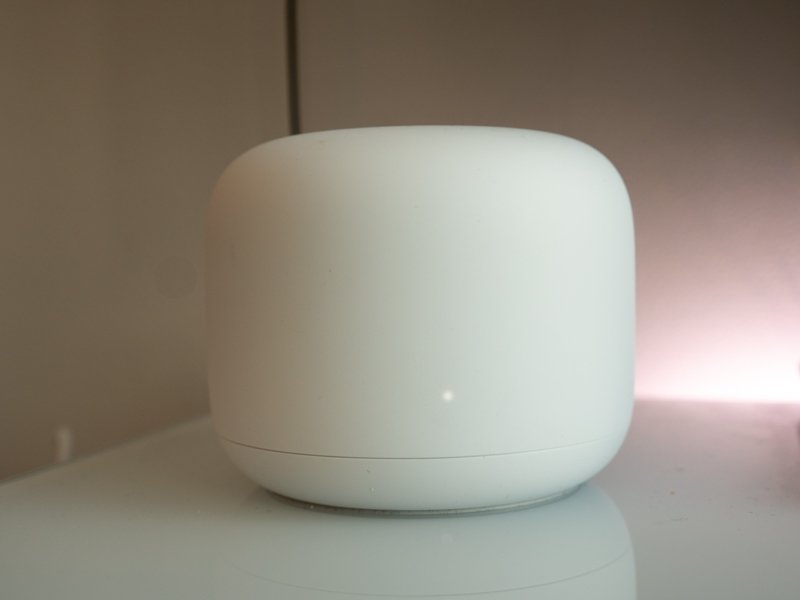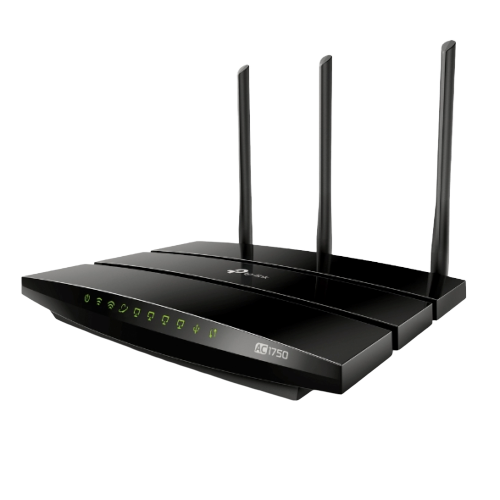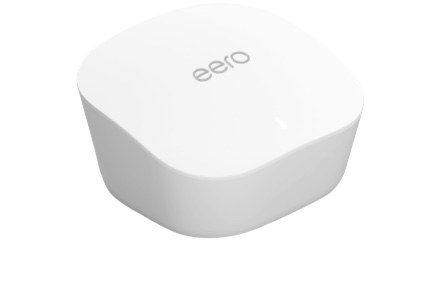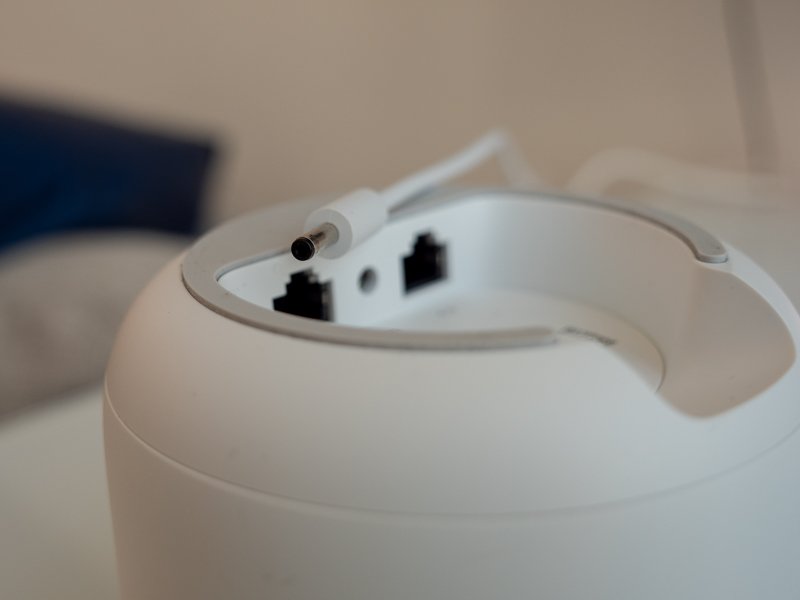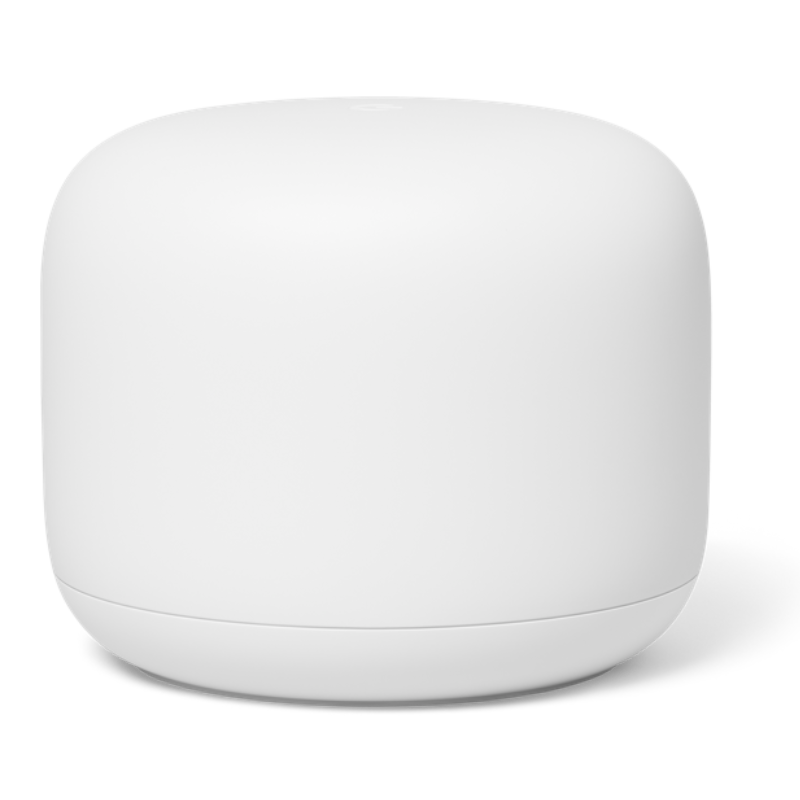These are our absolute favorite Wi-Fi routers for 2022
Wi-Fi 6 has taken over as the primary standard for the best new Wi-Fi routers, but Wi-Fi 5 still has plenty of speed for many people. Commonly known as 802.11ac routers, Wi-Fi 5 routers can often be found for a much lower price than the best Wi-Fi 6 routers. However, if you're looking for the best bang for your buck in Wi-Fi, Wi-Fi 5 routers are still worth considering. The Netgear Nighthawk R6900P is one of the best Wi-Fi 5 routers with solid speeds and great software support.
Best overall: Netgear Nighthawk AC1900 R6900PThe Netgear Nighthawk AC1900 spent years as one of the most recommended routers with reliable software, great support from Netgear, and plenty of performance for most homes. The R6900P model is the best of the AC1900 Nighthawks, with MU-MIMO support added in to handle even more devices without dropping out. The AC1900 connection breaks down to 600Mbps at 2.4GHZ and 1,300Mbps at 5GHz. The USB port is also now USB 3.0, so you can easily connect high-speed storage to your network.
This router supports Netgear's subscription software with Armor and Smart Parental Controls available for those that want them. Even without that, setup is a breeze with the Nighthawk app, and it should only take a few minutes to get connected. It's also worth noting that this router has been patched with a hotfix in late 2021 regarding some vulnerabilities discovered earlier in 2021. It's always nice to see software support for a product like this, especially when it's been available since early 2018.
Pros:- Fast AC1900 connection
- MU-MIMO support included
- Great Nighthawk software
- Netgear Armor and Parental Controls are available
- No mesh support
- Netgear Armor requires a subscription
Still one of the best
The Nighthawk R6900P is one of the last great Wi-Fi 5 routers with AC1900 speeds and support for Netgear's security solutions.
Best value: TP-Link Archer A7 AC1750TP-Link's Archer A7 is a bit of a legend in the value router space, with solid power at AC1750 and frequent discounts making it a great bargain. The dual-band connection supports a 1,300Mbps connection at 5GHz and 450Mbps at 2.4GHz, so even if you're using it with a fast internet connection, you won't need to give up much, if any, performance. Around the back, you've got four Gigabit Ethernet ports for wired devices and a USB 2.0 port for network storage.
As you might expect, software features are a bit basic, but with easy setup and management with TP-Link's Tether app, you've got easy access to all the most essential options. This router even supports OneMesh expansion. If you add in OneMesh-supported TP-Link Wi-Fi extenders, you can expand your coverage without changing a single setting on your wireless devices.
Pros:- Fast AC1750 connection
- 4x Gigabit Ethernet ports
- Easy setup with Tether app
- OneMesh expansion support
- No MU-MIMO
- Unattractive design
Plenty of speed for most families
The AC1750 connection of the Archer A7 isn't anything special, but with a great price and solid software features, it's a bargain.
Best mesh router: Eero mesh routerEero's third-generation mesh Wi-Fi router is one of the easiest and most reliable Wi-Fi solutions we've ever used. It has an excellent app to use for setup, network management, and enough speed for most people. This third-generation Eero router has a dual-band connection with AC1300 rates. That breaks down to 866.7Mbps at 5GHz and 400MBps at 2.4GHz. Eero officially recommends this router for internet connection up to 350Mbps, but speeds were a bit stronger in our review.
This router can be purchased alone for a small apartment or home or bundled with another to build a mesh system. You can also expand your Eero mesh down the line with any other Eero router, including faster, newer models. If you are mixing models, it's good to make your fastest Eero the primary node. Overall, Eero is a great place to start if you were thinking about building a mesh, and even with its limited speeds, it should be fine for HD streaming and browsing on multiple devices.
Pros:- Compact design
- Easy setup in the Eero app
- Works with other Eeros
- Software extras like Eero Secure are available
- No web browser controls
- Speeds are a bit low
- Only two Ethernet ports
Simple to set up and manage
Eero keeps things simple, and that's how many people like it, with easy app-based setup and management and solid speeds.
Best mesh upgrade: Nest Wifi routerThe Nest Wifi from Google is one of our favorite mesh systems with easy setup and plenty of speed for most people. The dual-band AC2200 Nest Wifi routers have plenty of speed for most home internet connections, even when sharing the connection in a mesh deployment. Google's setup and management app are also simple and easy to use, including extra security with Google Safe Search filtering.
The routers have a simple, rounded, clean design with two Ethernet ports on the bottom with one port used by the incoming internet connection on the primary router. Google allows you to expand your mesh in a few ways, including more Nest Wifi routers. Using a Nest WiFi router is the fastest option, but you could also use a slower but adequate Nest Wifi point or Google Wifi for expansion.
Pros:- Solid AC2200 Wi-Fi speeds
- Compact routers
- Easy setup and management
- Easy expansion with Nest Wifi points and Google Wifi
- Only dual-band Wi-Fi
- Limited wired connectivity
- Expensive for the speed
Easy to build and manage mesh system
The Nest Wifi system is an easy-to-use mesh system with great software support, and it's easy to expand with Nest Wifi points.
Best software: Asus Blue CaveWhen Asus released the Blue Cave in 2018, the company went all out with a stylish new design, solid specs, and a great software package, including AiMesh expansion and AiProtection Security. The router also packs top Wi-Fi specs with dual-band AC2600 speeds, MU-MIMO, and support for 4x4 Wi-Fi 5 device speeds. Simply put, it's a maximum of 1733Mbps on the 5GHz band for high-end gaming PCs. Rates at 2.4GHz are strong, too, with up to 600Mbps supported. The AC2600 spec comes from turboQAM 800Mbps 2.4GHz support.
The standout feature of this router is its design. When it came out, nearly every other router was a flat black box with antennas sticking out from behind. The sort of thing that would fail the spouse test. Asus shook things up with a sleek white housing featuring a blue cave-like accent in the middle. With all the antennas inside, it could fit right in with the rest of your living room decor, giving it optimal positioning. Even with this design, it still packs in four gigabit LAN ports and USB 2.0.
On the software side, it got the entire suite. Asus' AiProtection Pro is included for improved network security with no subscription fee required. It also has advanced parental controls with profile support, content filtering, time scheduling, and easy management in the Asus router app. This router also supports AIMesh, including node support, so if you wanted to, you could buy several Blue Caves and create a solid mesh network at home.
Pros:- Fast AC2600 speeds with MU-MIMO
- Attractive design
- AiProtection Pro is free
- AiMesh expansion supported
- Coverage isn't great
Great software with plenty of style
The Asus Blue Cave AC2600 router has excellent security and parental controls with AiProtection Pro and mesh expansion with AiMesh.
Best modem combo: Netgear Nighthawk Cable Modem C7000One of the nicest things about renting a router from your ISP is the simplicity of a do-it-all gateway. This Netgear Nighthawk C7000 cable modem supports internet packages up to 800Mbps and a dual-band AC1900 wireless router built-in. First, the modem is a 24x8 DOCSIS 3.0 unit, meaning you can get up to 800Mbps download on Xfinity, 400Mbps on Spectrum, and 500Mbps on Cox. If you have a different cable provider, check with customer support before buying.
The router portion is a reasonably standard dual-band AC1900 setup. It breaks down to 600Mbps for 2.4GHz devices and 1,300Mbps for 5GHz devices. So while most phones and tablets will only connect at 867Mbps on 5GHz, some devices like premium laptops will support the full 1,300Mbps connection speed.
This router can be set up with the Nighthawk app for easy Wi-Fi setting management, and it also has four Ethernet ports for wired devices. You will need to be in contact with your ISP to activate it on your service. This process varies by provider. A combo unit like this one doesn't offer as much flexibility as a standalone router and modem, but with its compact size, it's a good solution for many.
Pros:- Up to 800Mbps download speeds with DOCSIS 3.0
- No separate router required
- Certified for Xfinity, Spectrum, and Cox
- Coverage is lacking
- No MU-MIMO support
One device for your whole network
The Nighthawk C7000 is a great way to reduce your network's complexity with a single device for your modem and router.
Bottom lineWi-Fi 5 routers still pack a punch, and unless you've upgraded to the latest and greatest gigabit connection from your ISP, it could be all you need. Even today, some of the best Wi-Fi routers in general use the tech. However, one thing to remember when you buy an older standard is to make sure you're up to date. Some systems will update automatically on setup, but it's always worth a trip to the support site for your router to be sure. This is due to patches released to address any security flaws found as time goes on. It's common in all routers, but you need to make sure you're up to date.
When it comes down to what you need in a router, the Nighthawk R6900P has all the right ingredients with plenty of speed for most people and reliable software. The app setup makes it easy to replace your old router, and some will welcome the security extras like Netgear Armor and Netgear's parental controls. But, for the money, the Nighthawk R6900P is a lot of router for the price.
How is Wi-Fi 6 better than Wi-Fi 5?While Wi-Fi 5 is still a solid choice, if you're looking for more speed, better reliability with heavy traffic, and a longer run of software updates, it's a good idea to go with Wi-Fi 6 instead. Wi-Fi 6 increases the base speeds of your router with the same amount of spectrum Wi-Fi 5 needs to give your 867Mbps, giving you up to 1,201Mbps on Wi-Fi 6.
Wi-Fi 6 can also use more modern standards like 1024 QAM allowing for more consistent operation in congested areas like apartment buildings. MU-MIMO is also included in many more Wi-FI 6 routers though many Wi-Fi 5 routers support it as well. The Wi-Fi 5 standard also supported additional DFS channels and 160MHz bands, but this feature is much more common in Wi-Fi 6 devices.
The most significant benefit of Wi-Fi 6 routers is that they're fully backward compatible with older devices still using Wi-Fi 5, 802.11n, and 802.11g.
The faster connection can also be a game-changer for the best Wi-Fi 6 mesh systems, with the upgraded wireless speeds enabling a faster backhaul connection between nodes. These things make Wi-Fi 6 the ideal connection for fast home Wi-Fi even if you haven't upgraded your devices to Wi-Fi-compatible models.
Credits - The team that worked on this guide![]()
Samuel Contreras When Samuel is not writing about networking and carriers, he spends most of his time researching computer components and obsessing over what CPU goes into the ultimate Windows 98 computer. It's the Pentium 3.
